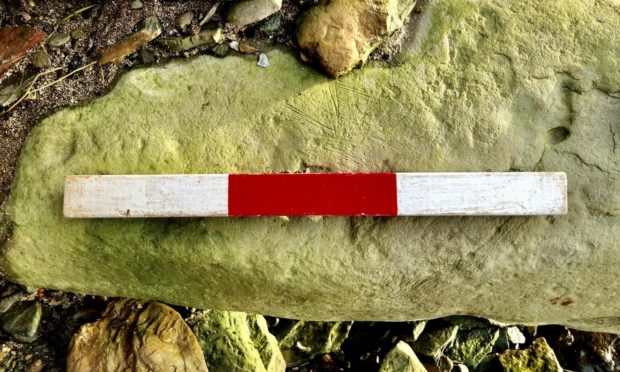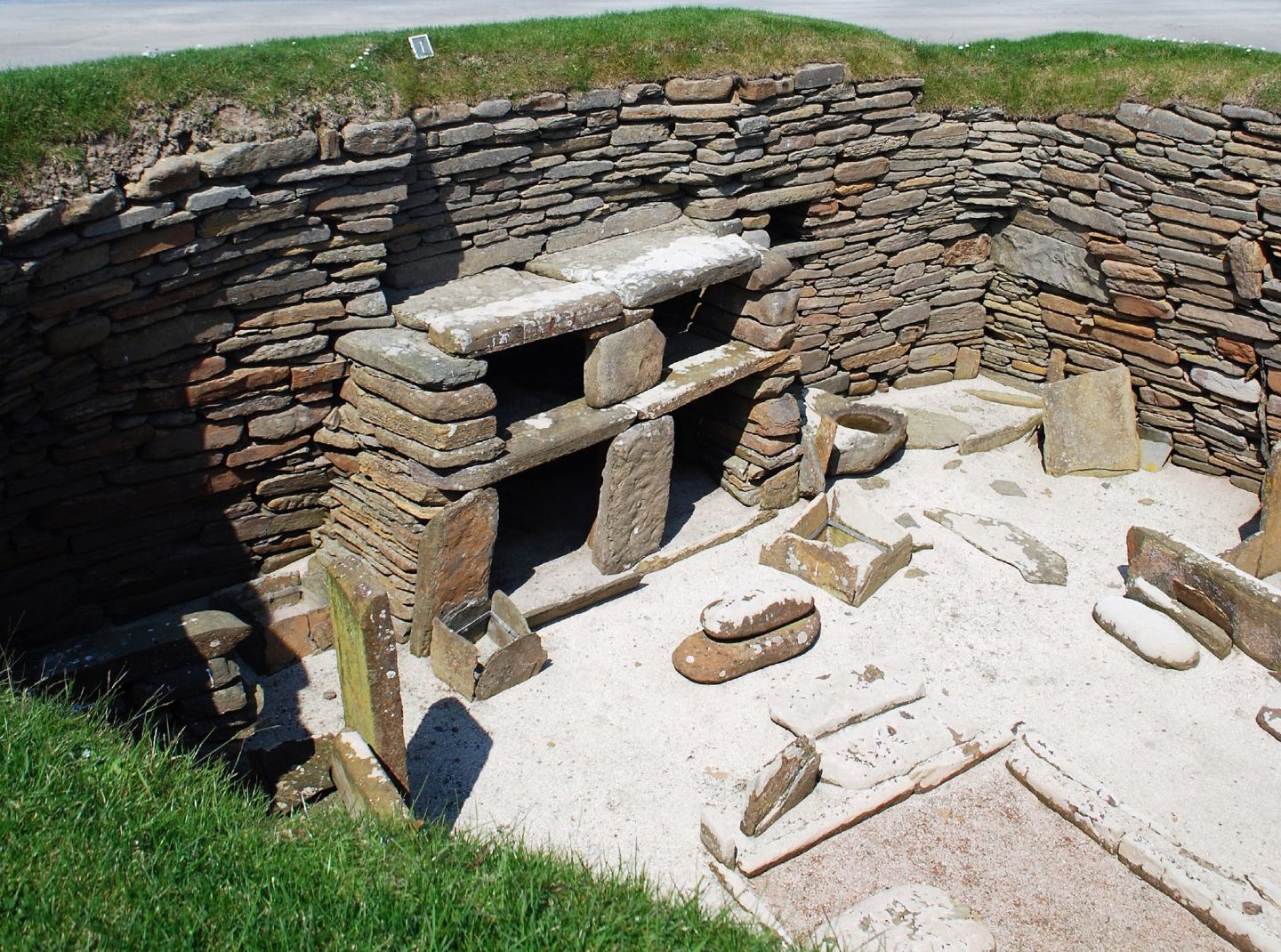Archaeologists may have discovered another Skara Brae near the world-famous Neolithic village – after a surprise find.
And it bears a unique testimony to a cultural tradition that flourished between about 3200 BC and 2800 BC.
The work of an ancient artist on Orkney has been unearthed, which could hold tantalising clues to a lost settlement.
A section of badly-damaged wall has been exposed by tidal erosion at the north end of the Bay of Skaill. Deer antlers, a boar tooth, a cattle jawbone and a large decorated stone have also been discovered.
But a large 5,000-year-old decorated stone, featuring incised designs akin to those at the famous Neolithic sites of Skara Brae and the Ness of Brodgar, is the most exciting.
The markings were discovered by Sigurd Towrie, of the University of the Highlands and Islands Archaeology Institute, after he noticed animal remains falling from an eroding section of shoreline at the north end of the bay.
A site on a par with Skara Brae
Mr Towrie said the finds “suggest there is another settlement at the Bay of Skaill – one that, from previous environmental sampling, is likely to be 4,000 to 5,000 years old”.
He said: “If this is the case, and based on the scale of the eroded section, we may well be looking at a Neolithic/Bronze Age site on a par with Skara Brae – albeit one that is now disappearing at an alarming rate.”
Due to the light during that first visit, the faint incisions were not visible at first but were spotted during an operation to recover the animal bone a few days later. In the raking light of the setting sun, a pair of incised triangles were clear, along with rectangular bands running across the stone’s 60cm wide surface.
But a return visit to the site a few days later revealed there was more.
He added: “Having been involved with the Ness of Brodgar excavations since the complex’s discovery in 2003, I’ve seen a fair bit of Neolithic ‘art’ over the past 18 years. In comparison, the Skaill marks are very ephemeral and quite rough — nothing like some of the beautiful, deeply incised decoration from the Ness structures.
“But how it got there we don’t know – maybe the sea will reveal more over the next few weeks. It does shed more light on the period and the people of the time and just how creative they were.”











